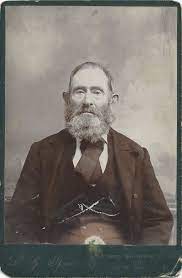Towards the end of the 1780s William Blackett arrived in St. John’s Island, soon to be renamed Prince Edward Island, and now a Canadian province. (Some sources state that he was sent out by the British Government to North America to buy lumber for the English shipyards in 1785, but his son Walter William was born in Limehouse, London in 1786.) In 1777 William had married Anne Martha Applequist (shown as Martha Applequest in the marriage record) in Bethnal Green, London. William and Martha settled in the island, and in 1790 were living in Launching, Lot 56. Shortly afterwards William and his family moved across Grand River to Annadale where William bought or leased 100 acres of land running alongside what is now known as Blackett’s Creek. William Blackett appears as head of a household in Lot 56 in 1798. Many of this family remained in Prince Edward Island, but William’s son Walter William Blackett (1786-1875) moved to Cape Breton, Nova Scotia, where he founded the settlement of Glace Bay (see Wikipedia article) where many of his descendants were born.

Walter William Blackett’s son, William Blackett, built a house on the shores of what is now known as Blackett’s Lake. Shortly before his death in 1925, William’s son Charles Wesley Blackett wrote a fascinating account of his immediate family history. For a transcript of it, for which we are grateful to Donna Long, please click here. Two further sons, Daniel and Joseph, settled in French Polynesia (see A violent end for a Blackett).
William’s granddaughter Diana Blackett (1816-1906), who married Michael Taylor of Nova Scotia, settled in Massachusetts, USA, and a number of her descendants were born there, as were a number of other descendants of William.
It is now believed that William Blackett was born in Rotherhithe, Surrey in 1750, the son of John Blackett and Mary and the grandson of Benjamin Blackett, who had earlier moved from his native Stepney south across the River Thames to Southwark. The evidence to support this is circumstantial (and should therefore be treated with caution) but is persuasive. Anne Martha Applequist married William Blackett, a widower, in Bethnal Green, north of the River Thames but she was born in 1748 in Rotherhithe, south of the river. The name Applequist was an extremely rare surname in the London area at the time and was probably Scandinavian, coming from the Swedish word for an apple twig – appleqvist. Martha’s father, Daniel Applequist had married his wife in St. Katherine by the Tower, on the north bank of the river but at least four of his children, including Anne Martha, were born in Rotherhithe before he and his wife moved back north across the river to Poplar in the parish of Stepney, where at least four more of their children were born. Anne Martha was baptised in St. Mary’s, Rotherhithe, where on 24 April 1750 her sister Elisabeth was baptised two days after William Blackett was also baptised there. Blackett was also an extremely rare name south of the river at the time and it seems probable that the two families may have been well acquainted with one another. Rotherhithe was a nautical area at the time and William is described as a shipwright at the 1783 burial of William John, his son by his first marriage, and at the baptism of his son Walter William in 1786.
Since the immediate ancestry of William Blackett has probably been established, his tree now forms part of that of Benjamin Blackett of Stepney. For further details of Benjamin Blackett please see the paragraph on him in London Blacketts.
Some sources show one of William and Anne Martha’s sons as being ‘John William’ Blackett, who died in 1895 aged 101. However, although we have not discovered the baptismal records concerned, it seems more likely that he was William, grandson of William and Anne Martha and the son of John Blackett and Elizabeth Scheverie/Cheverie. There is some circumstantial evidence in support of this. In 1798 the elder William appears as head of a Household of 7 people in Lot 56, (presumably farming the 100 acres mentioned in the first paragraph above). John was appointed as a Fence Viewer of Lot 56, Prince Edward Island in 1833 and died two years later. By his Will dated 24 August 1835 he bequeathed “the old homestead or the farm” of 100 acres (which he had presumably inherited from his father, William, his brother Walter having by then moved to Cape Breton, Nova Scotia) to his eldest son, William, with the stipulation that William should provide for his mother (John’s widow, Elizabeth) and for his (William’s) brother George and sisters Katherine and Diana. One of John’s executors was Robert Robertson, probably the husband of his sister Mary.
The younger William appears a number of times throughout his lifetime. In 1825 he registered the boat “Success”; in 1849 William and John (presumably William’s son) Blackett of Grand River registered the boat “Swallow” which was built in the Grand River shipyard of William Blackett; in 1861 he is shown farming 55 acres (it is not clear what happened to the remaining 45 acres) in Lot 56; in 1871 he appears in Lovell’s P.E.I. Directory as a farmer of Annandale (in Lot 56); in the 1881 census as a farmer aged 82; in the 1891 census aged 97, living with his son William; and in his death notice dated 13 Apr 1895 as aged 101. He had made his Will in 1885, one of the witneses to which was Simon Chivirie (sic), probably the husband of his granddaughter Sarah Elizabeth Blackett. In May 2016 a grave marker was unveiled to commemorate a former ‘Mountie’, James Henry Blackett, a grandson of William. For details of the ceremony please see A Blackett Mountie.
If anyone can provide information that contradicts our assumptions above (or, better still, supports them!) please contact us.
